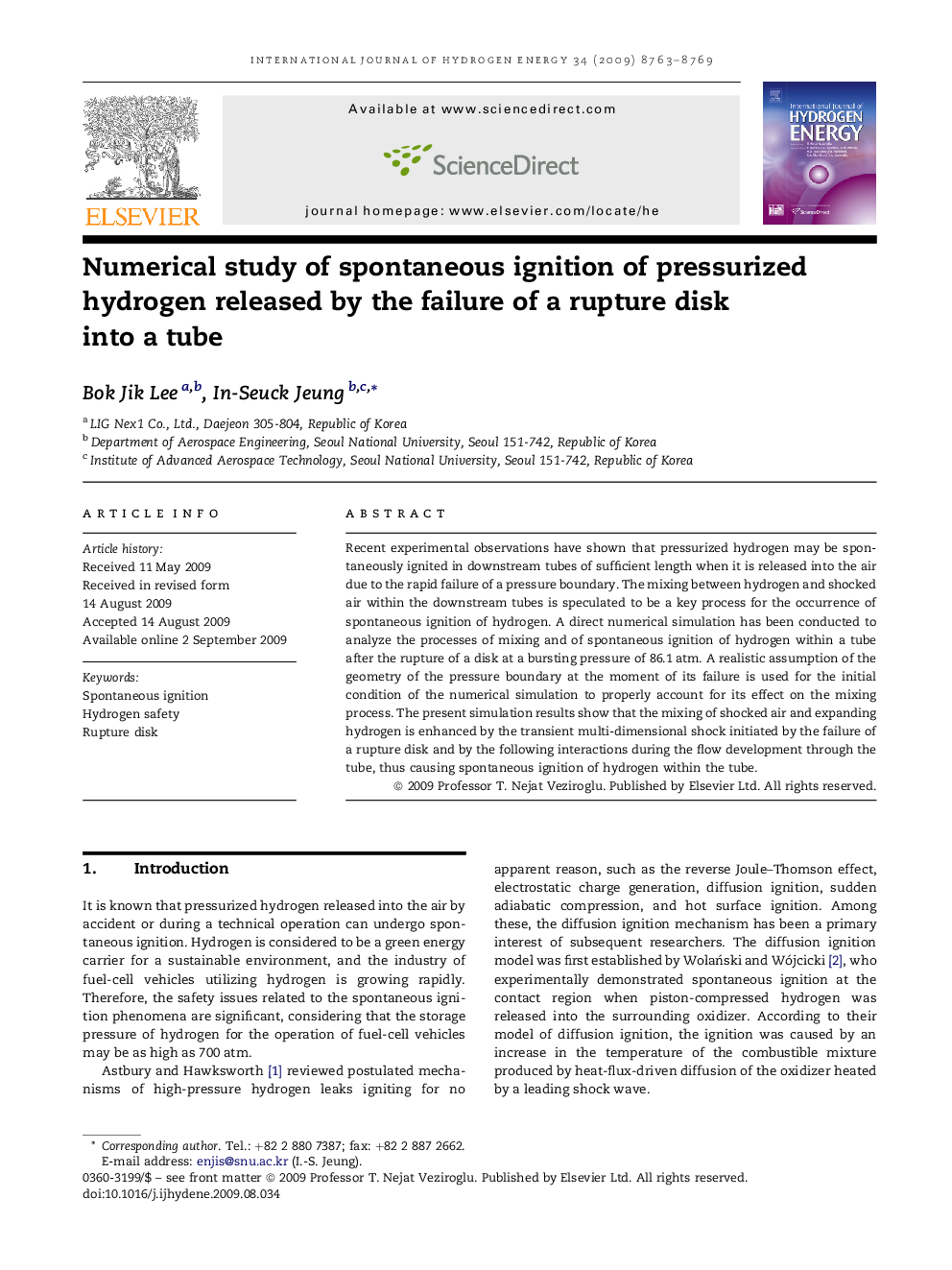| Article ID | Journal | Published Year | Pages | File Type |
|---|---|---|---|---|
| 1278454 | International Journal of Hydrogen Energy | 2009 | 7 Pages |
Recent experimental observations have shown that pressurized hydrogen may be spontaneously ignited in downstream tubes of sufficient length when it is released into the air due to the rapid failure of a pressure boundary. The mixing between hydrogen and shocked air within the downstream tubes is speculated to be a key process for the occurrence of spontaneous ignition of hydrogen. A direct numerical simulation has been conducted to analyze the processes of mixing and of spontaneous ignition of hydrogen within a tube after the rupture of a disk at a bursting pressure of 86.1 atm. A realistic assumption of the geometry of the pressure boundary at the moment of its failure is used for the initial condition of the numerical simulation to properly account for its effect on the mixing process. The present simulation results show that the mixing of shocked air and expanding hydrogen is enhanced by the transient multi-dimensional shock initiated by the failure of a rupture disk and by the following interactions during the flow development through the tube, thus causing spontaneous ignition of hydrogen within the tube.
